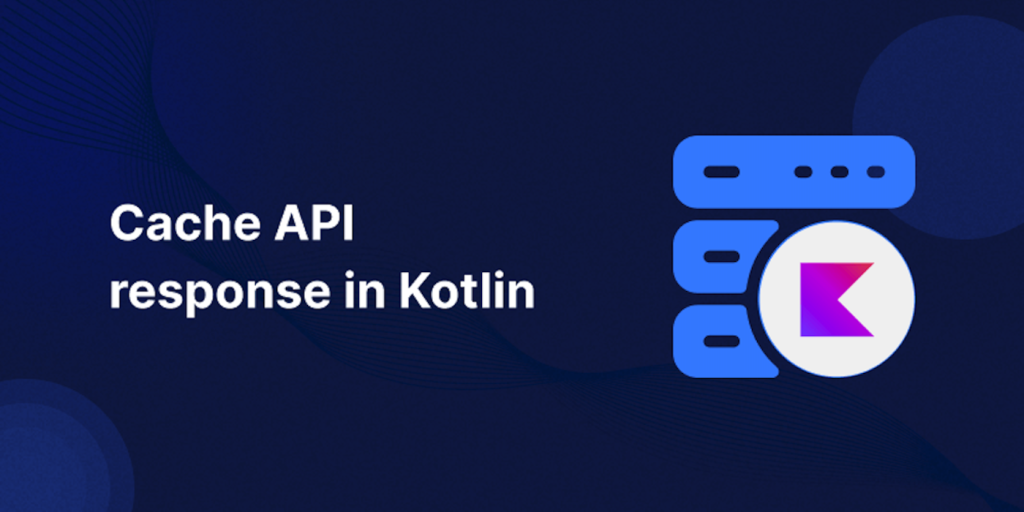Caching is key to boosting app performance by reducing network requests and speeding up data retrieval. In this article, we’ll explore how to implement various caching techniques in Kotlin using popular libraries like Retrofit, Volley, Apollo etc., helping you optimize API performance and improve the user experience.
While there are many other Api Client libraries in Android and Kotlin, we will be focusing on the three most popular listed below
| Library | Type | Features | Use Case |
|---|---|---|---|
| Retrofit | REST | Popular, supports OkHttp, Coroutines, RxJava, JSON/XML | REST APIs |
| Volley | REST | Built-in caching, image loading, retry policies | REST APIs(Android-specific) |
| Apollo | GraphQL | Strongly typed GraphQL queries, caching, Kotlin coroutines | GraphQL APIs |
Now, we’ll explore how we can cache response using these libraries along with basic code examples.
Retrofit
Retrofit, by far the most popular API client library for REST APIs in Android provides support for caching via OkHttp.
You can configure OkHttpClient with a disk cache, and Retrofit will automatically cache responses based on HTTP cache headers like Cache-Control.
Example ->
|
1 2 3 4 5 6 7 8 9 10 11 12 13 14 15 16 17 18 19 |
val cacheSize = 10 * 1024 * 1024 // 10 MB cache val cache = Cache(applicationContext.cacheDir, cacheSize.toLong()) val okHttpClient = OkHttpClient.Builder() .cache(cache) // Enable caching .addInterceptor { chain -> var request = chain.request() request = if (hasNetwork(applicationContext)) request.newBuilder().header("Cache-Control", "public, max-age=60").build() else request.newBuilder().header("Cache-Control", "public, only-if-cached, max-stale=2419200").build() chain.proceed(request) } .build() val retrofit = Retrofit.Builder() .client(okHttpClient) .baseUrl("https://api.example.com/") .build() |
Volley
Volley is an HTTP library developed by Google that makes networking for Android apps easier and faster. Volley has built-in support for caching HTTP responses to disk. By default, it caches responses in memory and can store responses on disk based on HTTP headers (Cache-Control, Expires).
Example ->
|
1 2 3 4 5 6 7 8 9 10 11 12 13 14 15 16 17 18 19 20 21 22 23 24 25 26 27 28 29 |
// Function to initialize Volley RequestQueue with caching fun createRequestQueue(cacheDir: File): RequestQueue { val cache = DiskBasedCache(cacheDir, 10 * 1024 * 1024) // 10 MB cache val network = BasicNetwork(HurlStack()) return RequestQueue(cache, network).apply { start() // Start the request queue } } // Function to make a GET request fun fetchData(requestQueue: RequestQueue, url: String) { val stringRequest = StringRequest(Request.Method.GET, url, Response.Listener<String> { response -> // Handle successful response println("Response: $response") }, Response.ErrorListener { error -> // Handle error response println("Error: ${error.message}") } ) // Add the request to the RequestQueue requestQueue.add(stringRequest) } // Usage example val requestQueue = createRequestQueue(applicationContext.cacheDir) fetchData(requestQueue, "https://api.example.com/data") |
Apollo
Apollo is a powerful GraphQL client for Android that simplifies data fetching and management by generating strongly typed models from GraphQL queries. Apollo provides two major ways to cache any API response namely Normalized Cache and HTTP Response Cache.
- Normalized Cache stores GraphQL responses in a normalized form in memory or SQLite, so it can cache individual objects and fields.
- HTTP Cache: Similar to OkHttp caching for raw HTTP responses.
Normalized Cache Example ->
|
1 2 3 4 5 6 7 8 9 10 11 |
val cacheFactory = MemoryCacheFactory(context, "apollo_cache.db") val apolloClient = ApolloClient.Builder() .serverUrl("https://api.example.com/graphql") .normalizedCache(cacheFactory) // Use normalized cache .build() // Using cache policy val response = apolloClient.query(MyQuery()) .cachePolicy(CacheFirst) .execute() |
HTTP Cache Example ->
|
1 2 3 4 5 6 |
val apolloClient = ApolloClient.Builder() .httpCache( directory = File(pathToCacheDirectory), maxSize = 100 * 1024 * 1024 ) .build() |
This is how we can cache API responses in popular API client Libraries of Android in Kotlin Language.
Hope this helps you.
Keep coding and keep
